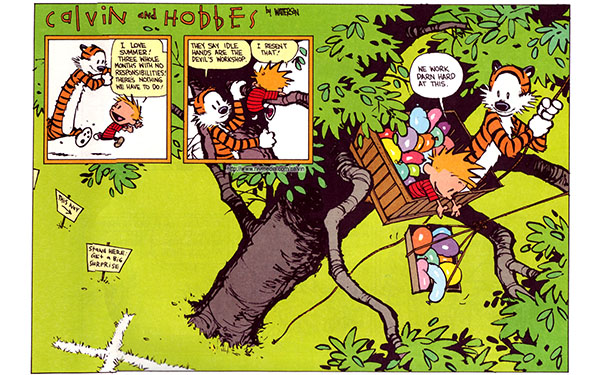Perspective in storytelling: using it powerfully can set your cartooning apart. After all, where do you want your viewer — immersed in the action or watching from the sidelines? Ultimately it depends on the story you are telling, and you have to choose the appropriate viewpoint.
Perspective is simply our viewpoint as we see a scene
So why does it matter? Apart from the technical aspects of drawing perspective, it also affects the atmosphere of a scene, the drama and the storytelling effect of an image.
How someone interprets your story begins with how you stage it
While technical considerations like “where are the vanishing points?” are relevant, the initial choice of viewpoint is more important overall.
What do we know about viewpoint, or perspective in storytelling?
There are three overall possibilities: top of the page, bottom of the page, or somewhere in the middle. In short, bird’s eye, worm’s eye and eye level perspective.
We experience our own lives from human-eye-level, so ‘the middle of the frame’ is our default perspective. However bird’s eye view (top of the frame) and worm’s eye view (bottom of the frame) are often better choices because they make a scene feel unusual or dramatic.
Worm’s eye view can be very refreshing
Once we depart the toddler years we don’t often experience the world from ground level, so worm’s eye viewpoints feel unusual. They also bring a sense of immediacy, as if we are experiencing the world at close quarters, a bit like this image with Hobbes sitting beside the bath.

Similarly, worm’s eye perspective can make you feel like you are sneaking up and getting a secret look at a scene. Or it could instil a sense of vulnerability — being overshadowed by objects or people looming large over you.
If you’re ever in doubt, imagine yourself framing a photo — snapping it from a kneeling position or lower generally yields a more powerful image than simply standing normally.
Bird’s eye perspective in storytelling can give a sense of detachment
Aerial shots are relatively common in movies, so we are a little more accustomed to them. When you need to give an overview of (say) a cityscape or house when setting the scene, bird’s eye view gives you a sense of detachment or possibly superiority, like this image of Calvin and Hobbes lying in wait for Susie:

The important thing is to ring the changes from scene to scene
In movies they shift the camera angle every 7-10 seconds to keep the viewer engaged. Even if the physical scene is the same, the angle from which you are viewing it will have shifted. Count off the seconds next time you go to the cinema if you don’t believe me! Similarly, pick up any graphic novel and see how they show the same scene from different places and angles as the story moves.
Once again, using Bill Watterson’s work as an example: look at how he portrays Calvin and Hobbes from different angles to avoid repetitive views of the surrounding scenery.

How to decide what perspective in storytelling to choose
Ask yourself these questions:
- What story am I telling?
- What’s the default viewpoint for the scene I am setting?
- Would birds-eye view or worms-eyes view work better than ‘middle of the page’ to make things more interesting and/or dramatic for my viewer?
—
Questions? Suggestions?
If you’re not 100% clear about using perspective in storytelling (or you have a question about something totally unrelated to this post), I’d love to hear from you.
Leave a comment and who knows? Your question could spark off an exciting new lesson series!
